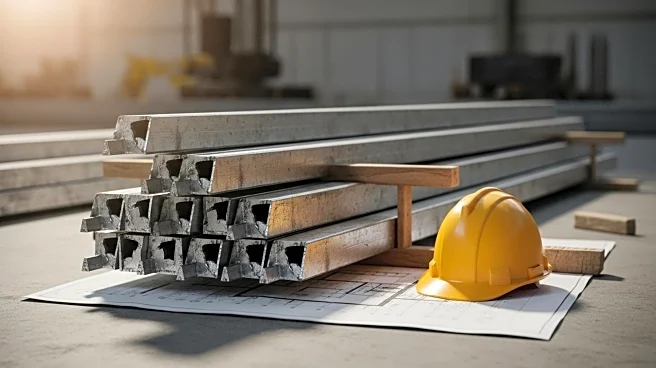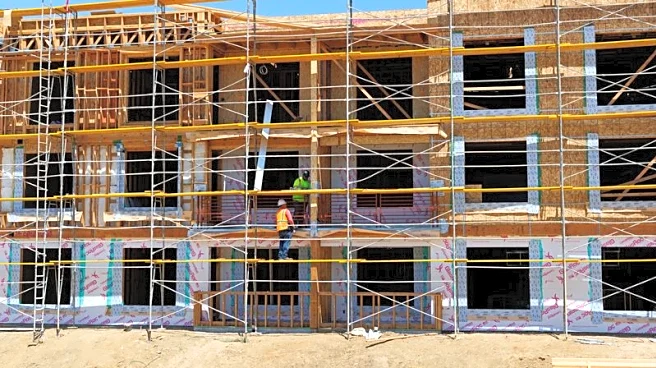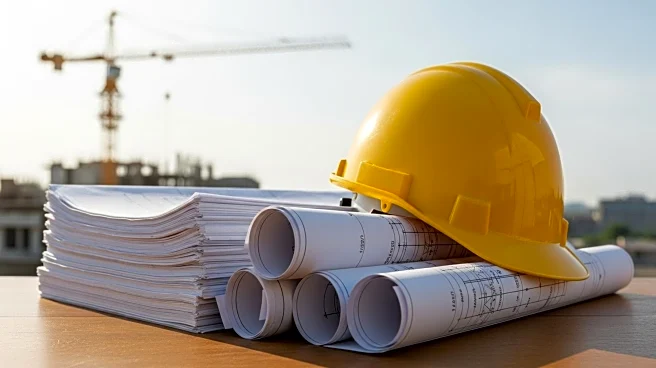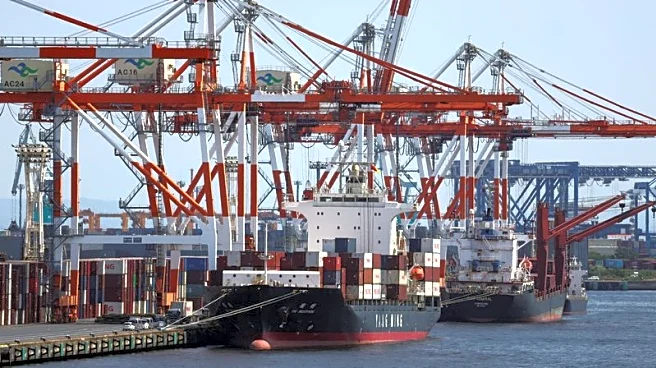What's Happening?
Nonresidential construction spending in the U.S. decreased by 0.2% in July, reaching a seasonally adjusted annual rate of $1.24 trillion. Private nonresidential outlays fell by 0.5%, while public nonresidential construction increased by 0.3%. The decline marks the third consecutive monthly drop, influenced by rising tariffs and labor shortages. Spending decreased in several categories, including manufacturing and commercial work. The Associated Builders and Contractors analysis highlights the impact of higher costs and labor shortages on private construction projects, with 16% of contractors experiencing project cancellations or delays due to tariff-related impacts.
Why It's Important?
The decline in construction spending reflects broader economic challenges, including tariff increases and labor shortages, which are affecting the construction industry's growth. These factors create uncertainty for developers, impacting project costs and timelines. The construction sector is a significant contributor to the U.S. economy, and its slowdown could have ripple effects on related industries and employment. Public nonresidential spending provides some cushion, but the decline in private nonresidential activity signals potential trouble ahead. Addressing tariff rates and labor shortages is crucial for stimulating new demand and stabilizing the industry.
What's Next?
The construction industry may face continued challenges if tariff rates remain high and labor shortages persist. Stakeholders, including policymakers and industry leaders, may need to implement measures to provide greater certainty on tariffs and address labor shortages. These steps could help stimulate demand for new construction projects and support industry growth. Monitoring changes in federal funding, taxes, and regulations will be essential for understanding future trends in construction spending and planning.












